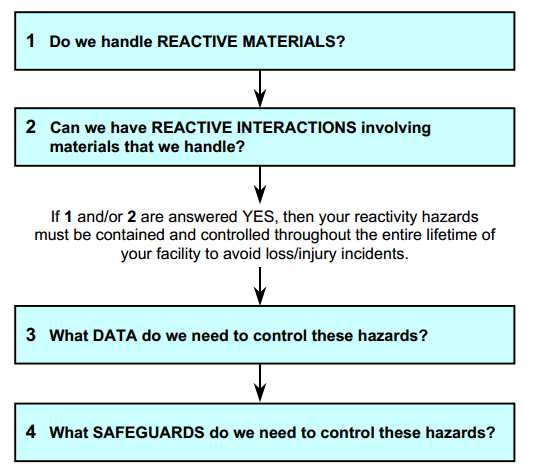 What is the current guidance regarding the reactivity characteristic? I heard that EPA had withdrawn the method for Reactive Cyanide and Reactive Sulfide as specified in Chapter 7 of SW846. Is this true?
What is the current guidance regarding the reactivity characteristic? I heard that EPA had withdrawn the method for Reactive Cyanide and Reactive Sulfide as specified in Chapter 7 of SW846. Is this true? Answer: 40 CFR Section 261.23 includes 8 different properties of a waste which is hazardous because of the characteristic of reactivity. A waste is a reactive hazardous waste if it exhibits one or more of those properties. The regulations do not require specific test methods for any of these properties. Therefore, generators must use waste knowledge to determine if their waste exhibits the characteristic of reactivity.

Reactivity Examples
According to property (5) under 261.23, a waste is hazardous if it is a cyanide- or sulfide-bearing waste which generates toxic gases or vapors at a quantity sufficient to present a health danger. In July 1985, EPA issued interim guidance describing certain threshold levels for cyanide- and sulfide-bearing wastes and laboratory methods for evaluating such wastes. In April 1998, EPA withdrew the July 1985 guidance. Therefore, EPA does not recommend use of the interim threshold levels or methods to determine if a waste is hazardous based on the characteristic of reactivity. In the near future, EPA will be removing the guidance threshold levels and the laboratory methods from Chapter Seven of SW-846. A copy (PDF) (8 pp, 18K, About PDF) of the EPA memorandum which withdrew the reactivity characteristic guidance is now available for downloading.
Vi editor cheat sheet. In chemistry, reactivity is a measure of how readily a substance undergoes a chemical reaction. The reaction can involve the substance on its own or with other atoms or compounds, generally accompanied by a release of energy. The most reactive elements and compounds may ignite spontaneously or explosively. Reactivity then refers to the rate at which a chemical substance tends to undergo a chemical reaction in time. In pure compounds, reactivity is regulated by the physical properties of the sample. For instance, grinding a sample to a higher specific surface area increases its reactivity.
How many times have you had a patient with an allergy to codeine described as stomach upset? Or how about a rash with morphine (probably secondary to histamine release)? True anaphylactic reactions to opioids are very rare (< 1%). But what happens when you have a patient with a true allergy, but still need to give an opioid? No problem, you just need to choose one that is structurally different.
Reactivity Cisco

- Group 1 (aka opiates) - Naturally occurring agents derived from the opium plant
- Morphine, codeine, thebaine
- Group 2 - Semi-synthetics
- Hydrocodone, oxycodone, hydromorphone, oxymorphone, buprenorphine (heroin is also in this group)
- Group 3 - Synthetics
- Fentanyl (alfentanil, sufentanil, etc.), methadone, tramadol, propoxyphene, meperidine
All of the group 1 and 2 agents are structurally very similar to each other and should not be given if a true allergy exists to any other natural or semi-synthetic derivative. Group 3 agents have structures different enough that they can be given to a patient intolerant to the natural or semi-synthetics without fear of cross reactivity. They are also very different from others in this same group. Quicktime pro registration key.

Reactive

